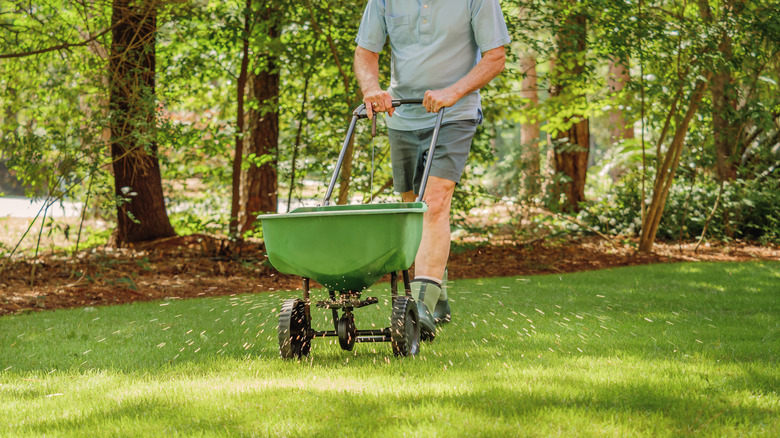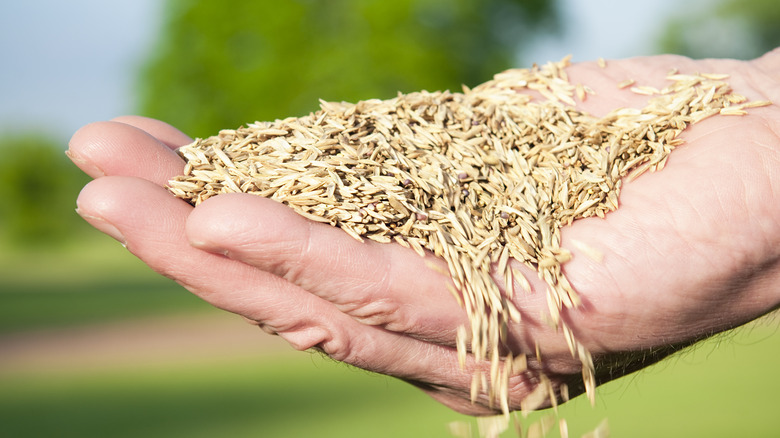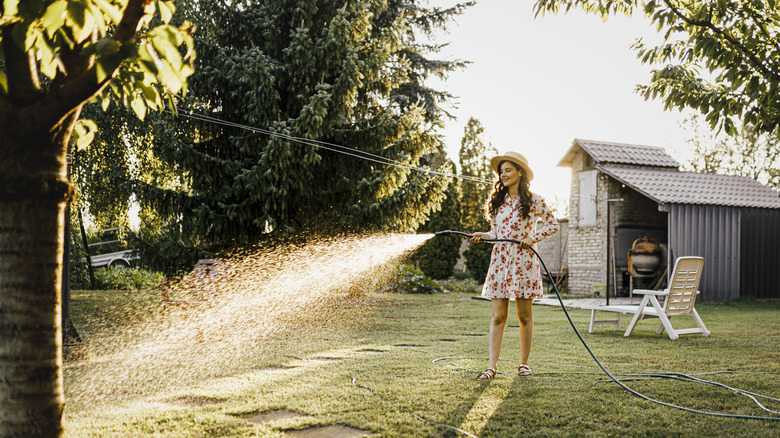What To Be Aware Of When Planting Grass Seed In The Summer
Whether you are seeding an entire yard or just a few patches, planting grass seed and maintaining growth in the summer is a difficult task. Summer in the United States means sun-drenched days and cooler nights, with more extreme heat and droughts in the southern and western parts of the country. That being said, each area experiences different weather patterns throughout the season, making summer grass growth an individualized process. Identifying the proper grass type for your environment, taking advantage of the best grasses to grow in the heat, and establishing an appropriate watering schedule will help ensure that your grass has the best chance of growth and success.
A handful of warm-season grasses are built to withstand even the most extreme heat and longest dry spells that come with record-breaking summers. So, even if you miss a day or completely forget about that patch of grass seed you've been nurturing for the past week, hope isn't lost as long as you're growing the right grass.
What grasses grow best
If you are growing brand-new grass in the heat of the summer, warm-season grasses like Bermuda, St. Augustine, centipede, zoysia, and bahia are the way to go. Bermuda grass is arguably the most heat tolerant of the bunch and thrives in 95- to 100-degree heat. While the rest are all built to withstand high levels of heat, bahia grass is known for its ability to tolerate extreme humidity, making it the perfect grass for the southeastern parts of the United States.
When planting grass seed in the summer, it's always important to think ahead to the upcoming seasons, which, in many cases, bring drastic temperature drops. If you live in an area that has relatively hot summer days but frigid cold winters, zoysia grass might be the best fit for you. It has a heat tolerance competitive with the other warm-season grasses, as well as a strong cold endurance. But, if the weather stays relatively mild even into the fall and winter, any of the four main warm-season grasses will do just fine.
Avoid planting any cool-season grasses, such as Kentucky bluegrass and fescue grass, which have low heat tolerances and grow mostly during cool months of fall and spring. This means that those in the Northeast may want to hold off on planting in the summer — warm-season grasses don't typically thrive in this region.
Watering is critical
Warm-season grasses establish deep roots, allowing them to tap into moisture buried deep in the soil even during longer droughts. That being said, it takes time for grass to grow (you know the old saying), and warm-season seedlings need much more watering and attention than their full-grown counterparts.
It is critical to develop a well-maintained watering schedule for seeds planted in the summer to ensure solid and successful growth. The germination stage is difficult because seeds often get washed out of place during watering, making it hard for roots to anchor themselves and plants to form. However, if done properly, this problem can be easily circumvented. A general rule of thumb is to maintain a damp seed bed at all times. This means that you must keep a close eye on the weather and environment to ensure that you are not under or overwatering your seeds. New seed beds typically require at least three waterings on a hot and sunny summer day.


